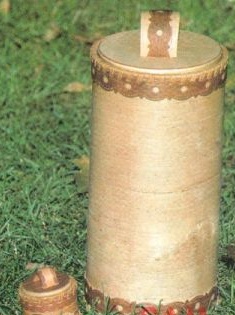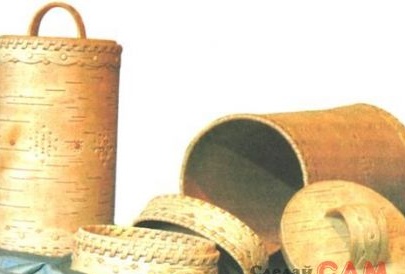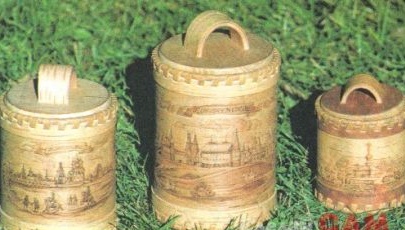In Russia, masters have long adorned birch bark crafts graceful carving. Slotted holes in the form of circles, ovals, half holes, rhombuses in combination with various colored linings formed an ornament characteristic of each region and region.
The word "ornament" comes from the Latin ornamentum - "decoration". This is a pattern consisting of rhythmically ordered elements. Patterns of ornaments are often built on the principles of symmetry, and motifs and images are stylized and generalized.
The decorative beginning of the ornament is combined with the semantic. Already in the Paleolithic and Neolithic era, man created the first geometric ornament, consisting of zigzags, crosses, circles and straight lines. In these drawings, the whole world surrounding a person was reflected: heaven, earth, water, the universe. In the future, animal and plant ornaments appear in which stylized patterns, creating a kind of letter (pictogram), passed on from generation to generation the story of the life of our ancestors.
The difference in natural conditions led to the fact that each nation created its own ornamental language. But following the canon of the national ornament, the masters included elements in the patterns that convey the originality and color of their area. For example, people living in the northern, wooded, regions of Russia, preferred to use Christmas trees in the ornament, and the inhabitants of the Far North - deer, Kyrgyz and Kazakhs - the horns of sheep, and the peoples of the Caucasus - clusters of grapes, various fruits.
Not only the pattern, but also the color has always played an important role in the ornament. So, for example, among the Chinese, red means south, black means north, green means east, white means west, yellow means center. And among the Kyrgyz, blue is the sky, red is fire, yellow is desert. Entire messages can be encrypted in ornaments. An example of such a peculiar letter is the ornament described in the work of G.W. Longfellow based on Indian folk tales - “Song of Hiawatha”:
(Translation by I. Bunin)
The Russian ornament is characterized by an exceptional wealth of geometric and plant shapes, which is reflected not only in folk embroidery and traditional woodcarvings, but also in carvings and paintings on birch bark.
Perhaps the most remarkable is the slotted, or perforated, birch bark carving, which is still found in the Russian North. Images of deer horns, birds, carved from birch bark, decorated the boxes of the master of Western Siberia. The ornaments of the northern peoples of Russia are interesting. The drawings in this article show a variety of ornaments.You can repeat the products in full or use only ornament.
The beauty and artistic value of a birch bark product depends largely on the technique of execution, in which skills play an important role (for example, the abrupt movement of the hand during carving).
Before carving, birch bark must be well cleaned on both sides and cut to a thickness of 2 mm. Of the tools for carving, a knife-cutter is used (it is sold in office supply stores and sometimes comes with a hiding blade) and a small blunt and polished awl. For marking the drawing, you need a ruler, square, compass, transfer or copy paper, a well-sharpened pencil of medium hardness and an eraser. It is convenient to use pre-prepared templates for repeating images of the ornament.
Carving is usually performed on a flat, cleanly planed board.
Prepared birch bark is cut according to product templates and a drawing is applied to the blanks. First cut the border, and then - the central part of the picture. Large parts of the picture must be cut according to the applied office, and small, with a certain skill, can be cut by eye. After the whole picture is cut out, its main parts are engraved with a slot and a small slot.
To develop certain carving skills, you need to start with simple tasks and simple drawings. To do this, on strips of birch bark prepared for carving, draw several parallel lines with an awl at a distance of 10 mm from each other. Simple shapes are cut out inside these strips, first 2-3 mm long and 0.3-0.5 mm wide cuts, then half-holes, rhombuses, “pies” and so on, gradually complicating the drawing.
Figures 92–94 show variants of products made using slotted birch bark technique with a color lining and a combination of teething with applique (or birch bark intarsia).
If under the birch bark a lining is made of foil or colored paper, then it is first glued to the lining, and then glued to the base.



